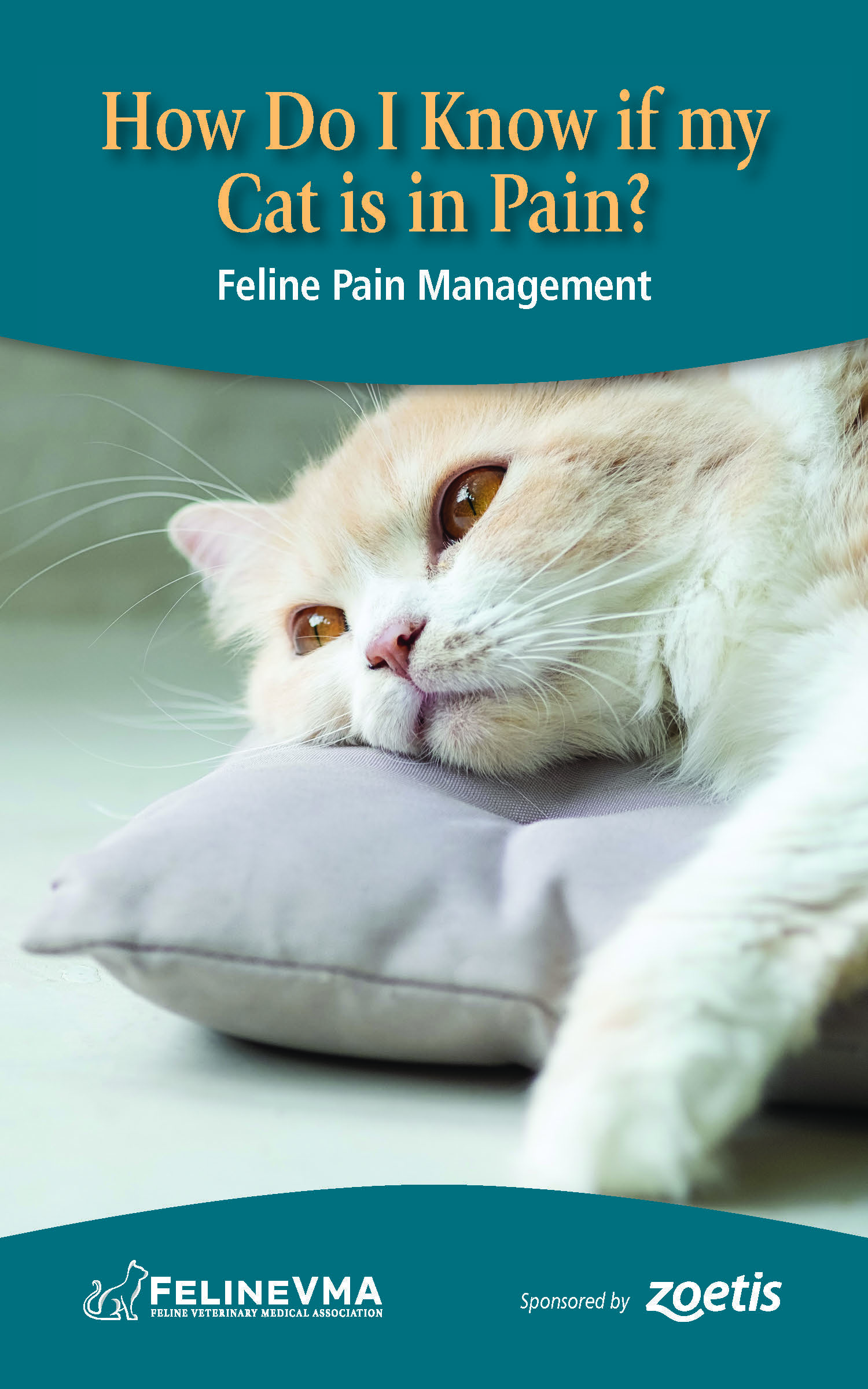Behavior changes in your cat are the primary indicator of pain. As the person who knows your cat best, you are an important member of their healthcare team and key in helping to detect the signs of pain as soon as possible. The signs of pain may be subtle because cats hide signs of discomfort and illness which could make them appear vulnerable to their enemies. This trait comes from their wild ancestors who needed to avoid becoming another animal’s prey. This can make it difficult to recognize if your cat is sick or in pain. Veterinary professionals have been trained to evaluate these subtle behaviors and physical health changes.
Categories of Pain
Acute Pain
This type of pain occurs in conjunction with inflammation and healing after an injury and can last for up to 3 months. It can be caused by injury, trauma, surgery, and acute medical conditions and diseases. Acute pain generally begins suddenly and usually doesn’t last long.
Chronic Pain
This is usually described as either pain that lasts beyond the normal healing time or pain that lasts in conditions where healing has not or will not occur. Degenerative joint disease (DJD), also known as feline arthritis, is an extremely common, chronic, painful disease in cats, with as many as 92% of all cats showing some signs of this disease. It is also one of the most significant and under-diagnosed diseases in cats.
Persistent Pain
Cats with persistent pain may need palliative care. Palliative care is the all-encompassing approach that provides cats, who have a disease that is not responsive to curative treatment, with a plan to provide an improved quality of life with pain control being the principal feature.
During regular checkups, your veterinarian talks with you about your cat and obtains a patient history. Regular checkups should occur a minimum of once yearly, and more frequently for senior cats and those with chronic conditions. So, when you notice changes in how your cat is behaving, interacting, or his daily routine, contact your veterinarian.
Signs and Symptoms
It is important for you to know your cat’s normal temperament and behavior. Just the slightest change could be a sign that your cat is sick or in pain. Since your cat is nonverbal and can’t tell you he is in pain, your veterinarian relies on you to determine if there are any abnormal behavior patterns that may be pain-related. If your cat displays any of the following changes, contact your veterinarian immediately.
- Decreased appetite or no interest in food
- Withdrawn or hiding
- Reduced movement or mobility, or hesitation to climb steps or jump
- Diminished exercise tolerance and general activity
- Difficulty getting up, standing, or walking
- Decreased grooming
- Changes in urination or defecation habits
- Squinting
- Hunched or tucked-up position instead of curled-up when sleeping
- Sensitivity or vocalization to petting or touch
- Temperament or other substantial behavior changes for your cat (e.g., seeking solitude, aggression, loss of appetite)
Management of Your Cat’s Pain
Your cat’s pain management plan that you develop with your veterinarian may include:
- Medication
- Physical Therapy
- Environmental changes such as using special bedding or ramps
Your veterinarian is committed to developing a strategy with you that provides your cat with compassionate care; optimum recovery from illness, injury, or surgery; and enhanced quality of life.
Monitoring
Once a veterinary plan has been developed, you may be asked to monitor your cat at home. It is important that you receive verbal instructions, written instructions, and ask for a hands-on demonstration of how to administer medications and handle your cat at home.
When you are monitoring your cat at home, we recommend that you:
- Use a notebook to record your observations.
- Include any changes in behavior, activities, or routine even if they seem minor.
- Schedule follow-up appointments with your veterinarian to share your observations.
- Alert your veterinary practice right away if there are changes, you have questions, or you notice early signs of adverse reactions.
Continuous management is required for chronically painful conditions, and for acute conditions until the pain is resolved. When pain is not recognized or managed, it can result in what may be considered unfavorable behavior changes.
Please remember – cats do not act out of spite, and any behavior change can be a sign of pain or another health problem. Being able to recognize and manage your cat’s pain can be as life-preserving as any other veterinary medical treatment.


